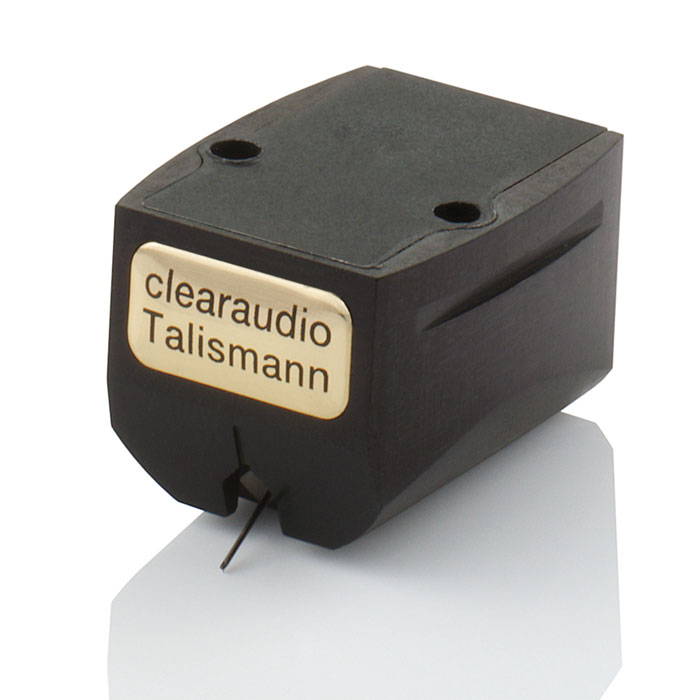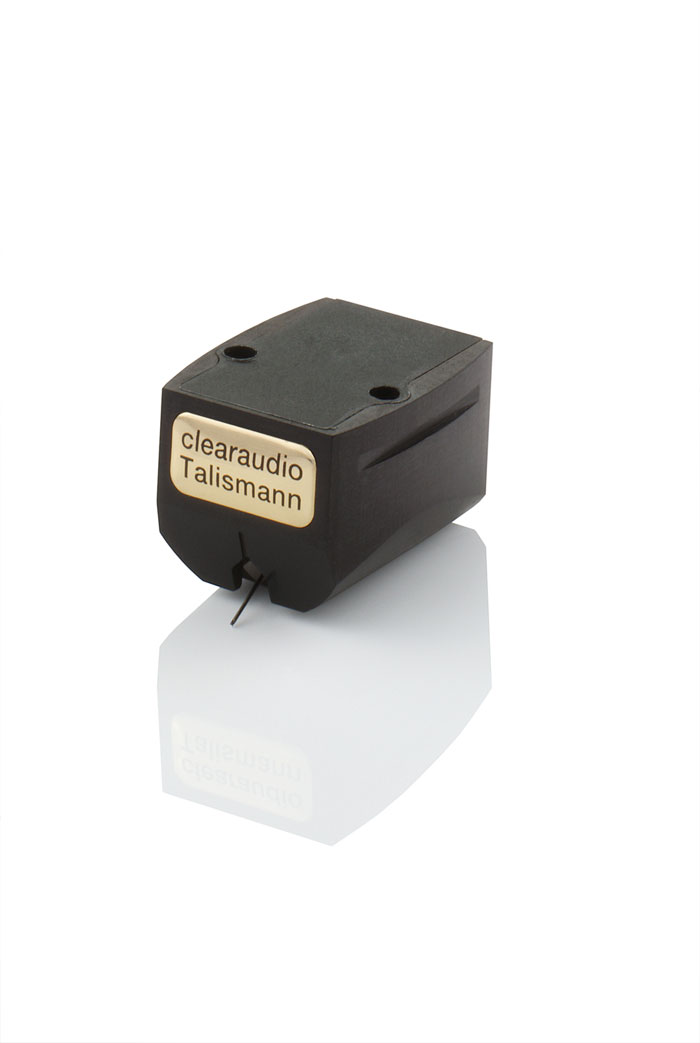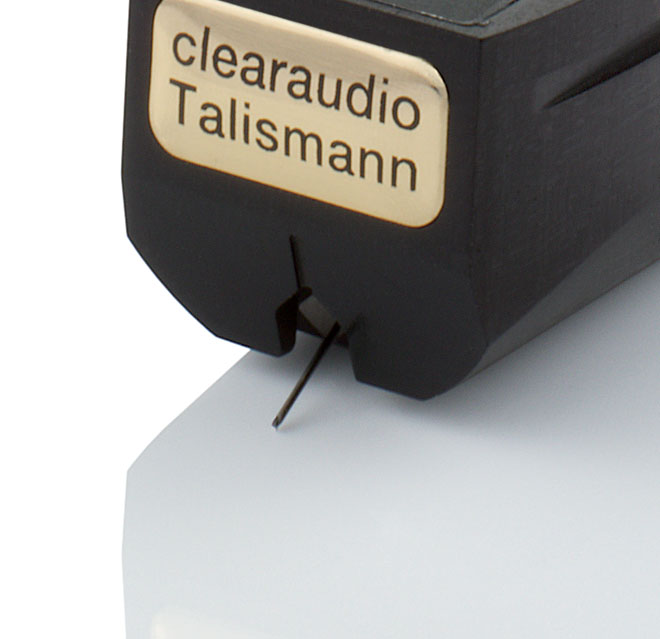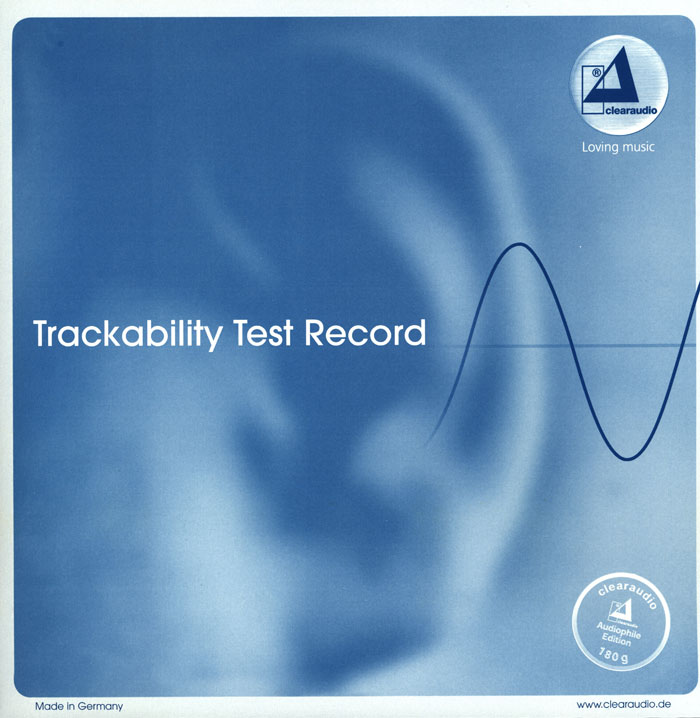Logowanie
KOLEKCJE!
BACH, CHOPIN, LISZT, MOZART, GRIEG, Dinu Lipatti, Otto Ackermann, Ernest Ansermet
The Master Pianist
PROKOFIEV, CHOPIN, TCHAIKOVSKY, SCHUMANN, BEETHOVEN, Martha Argerich, Claudio Abbado, Giuseppe Sinopoli
The Concerto Recordings
The Collection 2
Jakość LABORATORYJNA!
ORFF, Gundula Janowitz, Gerhard Stolze, Dietrich-Fischer Dieskau, Deutsche Oper Berlin, Eugen Jochum
Carmina Burana
ESOTERIC - NUMER JEDEN W ŚWIECIE AUDIOFILII I MELOMANÓW - SACD HYBR
Winylowy niezbędnik
ClearAudio
Essence MC
kumulacja zoptymalizowana: najlepsze z najważniejszych i najważniejsze z najlepszych cech przetworników Clearaudio
Direct-To-Disc
PIAZZOLLA, ChamberJam Europe
Tangos del Ángel y del Diablo
Direct-to-Disc ( D2D ) - Numbered Limited Edition
ClearAudio
Talismann V2 Gold


OD PRODUCENTA:
W nowy, rewolucyjny sposób przeprojektowaliśmy generator przetwornika. Zmieniliśmy pozycjonowanie i podwoiliśmy ilość magnesów (do 8 sztuk). Cewki operują więc w znacznie silniejszym polu magnetycznym. Co więcej, wykorzystaliśmy materiał, który pozwala zbudować najsilniejsze magnesy dostępne na świecie – super neodym. Dzięki tym działaniom, wydajność przetworników oznaczonych symbolem V2 została zwiększona o 30%, dzięki czemu sygnał wyjściowy może osiągać nawet 0.9 mV na 5cm/sec. Podkreślamy - wszystkie modele przetworników ClearAudio używają ulepszonego generatora V2.
Nowa diamentowa końcówka Mico-HD została również zmodyfikowana, by nie powiedzieć – rewolucyjnie zmieniona! Jej kształt w pione o profilu parabolicznym ma średnicę w zakresie od 0.008mm x 0.040mm. Całkowita waga grota igły (0.00016g) to 1/5 masy poprzedniej wkładki.
Satine wood - drewno, o nadzwyczajnych właściwościach niwelujących rezonans. Korpus wkładki został wykonany ręcznie, a drewno wypolerowano ręcznie na wysoki połysk.

OD PRODUCENTA:
W nowy, rewolucyjny sposób przeprojektowaliśmy generator przetwornika. Zmieniliśmy pozycjonowanie i podwoiliśmy ilość magnesów (do 8 sztuk). Cewki operują więc w znacznie silniejszym polu magnetycznym. Co więcej, wykorzystaliśmy materiał, który pozwala zbudować najsilniejsze magnesy dostępne na świecie – super neodym. Dzięki tym działaniom, wydajność przetworników oznaczonych symbolem V2 została zwiększona o 30%, dzięki czemu sygnał wyjściowy może osiągać nawet 0.9 mV na 5cm/sec. Podkreślamy - wszystkie modele przetworników ClearAudio używają ulepszonego generatora V2.
Nowa diamentowa końcówka Mico-HD została również zmodyfikowana, by nie powiedzieć – rewolucyjnie zmieniona! Jej kształt w pione o profilu parabolicznym ma średnicę w zakresie od 0.008mm x 0.040mm. Całkowita waga grota igły (0.00016g) to 1/5 masy poprzedniej wkładki.
Satine wood - drewno, o nadzwyczajnych właściwościach niwelujących rezonans. Korpus wkładki został wykonany ręcznie, a drewno wypolerowano ręcznie na wysoki połysk.
This second version of Clearaudio’s Talisman claims a heritage as far back as 1979 and the Insider pickup (the first recipient of a four-star rating from Harry Pearson), but is otherwise a fully up- to-date design implemented to bring some of the technology and performance of the company’s higher-priced models to a more affordable entry point. I read that, when asked how it sounds, Clearaudio’s Robert Suchy replied laconically, saying only, “It’s different. You’ve got to give it a listen” (see www.audioreference. co.nz/brand/clear-audio). From the context it appears that Suchy was here referring to his original Talisman, which I’ve not heard (and which is not to be confused with the identically named David Fletcher pickups of a quarter century ago sold by Sumiko). I can’t claim great familiarity with the Clearaudio line, but the last time I did a pickup survey (in 2007, Issue 172), I found the company’s Stradivari arguably the best of the survey and still regard it as one of the finest pickups I’ve ever heard. Its only tonal anomaly was a bit of extraversion, let us call it, at the extreme top, hardly such as to compromise neutrality, and its virtues of staggering dynamic range, life and vitality, transparency, and ability to involve were second to none. I would happily use it as a reference. What I can say, however, is that V2 iteration ($1750) certainly sounds different from the Stradivari. Let me begin by saying that from the top of the midrange on down this is one beautiful-sounding pickup: it’s got a gorgeous midrange and bottom end, really solid in all senses of the word, superb definition and clarity, and lots of heft and weight. The presentation here is really grounded in the best sense of the word, yet it’s dynamic as all get out, which is no surprise, dynamic range being a house specialty chez Clearaudio. It’s also got terrific rhythmic spring, bounce, and timing despite the lower midrange to bottom weight. Translated into specific examples, voices, male voices in particular, are fabulous, with an impression of body, dimensionality, warmth, and richness, whether it’s Sinatra, Belafonte, Fischer-Dieskau, or Bennett. The same with instruments like saxophones, all manner of winds, and all the lower strings and brass of the orchestra. The Bernstein Carmen was spectacularly rendered as regards imaging, soundstaging, dynamics, bass weight and power, definition, and clarity. On the same conductor’s recording of the Opus 131 Quartet played with the full complement of the Vienna Philharmonic strings, cellos, basses, and even violas are at once powerful yet almost lush in their warmth and radiance. Of course, you know I’m withholding a reservation: There’s a moderate brightness about this pickup that you can hear on almost everything. Take the Doris Day recording: she’s clear as a bell yet she doesn’t quite sound like herself, rather someone with a lighter, more brilliant voice—at least by comparison to what I am used to hearing on systems that I know to be tonally neutral. The effect is not unpleasant on this recording, but it can be a little worrying on some others. The Concert Sinatra is sonically beautiful, but to my ears it is perched just on the edge of brightness such that anything in the recording chain that is bright will push it over. Thus, the violins, so glistening with the Ortofon, are slightly steely under the Talisman. The two different versions of Ben & Sweets presented a real conundrum: because of the rising top end, the ORG became even brighter and more etched but was terrific throughout the midrange, lower midrange, and bass. However, the less aggressive Classic version, with its greater warmth, was perhaps too much of a good thing, though its less pronounced top end found a sympathetic complement in the Talisman’s rise. But either way, it’s sweet apples and tart lemons—paradoxically both at the same time. I tried loading the Talisman down to about 100 ohms (200 below its theoretical ideal of 300), but that seemed only to cut transparency and reduce level without materially bringing down the rise. I wasn’t surprised, because proper loading ensures only that any given mc’s high-frequency resonance is optimally damped. Once this is done, what you’re left with is simply the intrinsic response curve of the pickup; any further reduction in loading will affect frequency response only insofar as it is a function of that resonant frequency. I also tried lowering the back of the arm, which helped some. It was only after I had done a good bit of the listening that I happened to chance upon a frequency-response graph tucked in the paperwork, which told the story: around 5kHz, the response starts to rise until it reaches +2.5 at 15kHz, whereupon it drops back down. The rise is smooth, not peaky, but it is still there and its effect is audible. There is also a slight rise starting around 1kHz and going to 20Hz; it too is smooth, but it never exceeds a decibel and its effect is entirely benign, even in some respects, as noted, appealing. My summation must thus be conditional. For great stretches of the listening evaluations I quite enjoyed this pickup for its vitality, liveliness, midrange, lower-midrange, and bottom-end weight and solidity. But a lot of the time I was aware of the brightness: Sometimes it bothered me, sometimes it didn’t, depending on the source. For example, my favorite recording of the Appalachian Spring suite is the old Bernstein/New York Philharmonic one on Columbia, a very bright recording that is tolerable on a neutral system, better on a system with a slightly falling top end, but really fierce if the top end rises even a little. My Quads are quite flat on axis, yet they are also quite directional, so not a lot of sound bounces off the walls, which means that I could enjoy the Talisman V2 for its special virtues without its rise further aggravated by the speakers or the room. But I must add that this pickup is voiced the way a lot of current loudspeakers are, with a somewhat crisp top end, so this must be a sound that many find attractive. If you are among them, you should audition the Talisman V2. But if any part of your system has a tendency toward brightness, I’d advise a very patient audition. Fr. recenzji: https://www.theabsolutesound.com/articles/ortofon-cadenza-bronze-clearaudio-talisman-v2-gold-benz-zebra-wood-low/?page=3
- ClearAudio - akcesoria
magia muzyki, radość odsłuchu, dobra energia brzmienia
Czy zastanawiają się Państwo, jak rodzą się pomysły na nazwy, imiona własne poszczególnych modeli urządzeń high-end, komponentów czy akcesoriów? Np. wkładek gramofonowych? Na przykład: Talismann. To słowo w pewnym sensie magiczne i do magii się zarazem odnoszące. Słowo uniwersalne. Proszę zapytać Anglika (talisman), Niemca (Taslisman), Fina (talismaani), Bułgara (талисман), Węgra (talizmán), Turka (tılsım) czy Japończyka (お守り) - prawda? Słowo uniwersalne! Wszyscy je znają, wszyscy rozumieją, co więcej - podkładają pod nie te same znaczenia. Talizman - to przedmiot magiczny, niewielki. Każdemu, kto go posiada - przynosi szczęście. Czyż nie dokonaliśmy zatem największego odkrycia w sferze prawd oczywistych? Prawdziwemu Melomanowi szczęście bezgraniczne przynieść może wysokiej klasy wkładka gramofonowa. Taka właśnie jak ta, z niemieckiej manufaktury ClearAudio. Nazywa się TALISMANN. Po dawce poezji – akapit prozy: dalece udoskonalona i oryginalna (made in ClearAudio) konstrukcja wkładki MC z ClearAudio, wykorzystująca opatentowany system konfiguracji ośmiu magnesów, podnoszący zdecydowanie zakres czułości, a w konsekwencji dynamiki pozyskiwanego sygnału. Nowy kształt hebanowego korpusu jeszcze lepiej rozwiązuje problemy rezonansowe. • Masa całkowita: 10,8 gr. • Wyjście: przy 5cm/sec: 0,7 mV. • Impedancja: 30 ohm V2 – to oznaczenie w szczególności odnosi się do zupełnie rewolucyjnego, nowego, opatentowanego przez ClearAudio materiału diamentowego, z którego wykonano grot igły, ale nade wszystko – do jego szlifu (HD – High Definition) oraz sposobu jego zamocowania w borowym nośniku, który stanowi także oryginalne rozwiązanie pana Petera Suchego. Hebanowa obudowa jest wykonywana całkowicie ręcznie. W jej wnętrzu ukryty jest system antyrezonansowy. To kolejny patent ClearAudio. Skupia on w sobie złe wibracje, które heban przechwytuje i neutralizuje. Dlaczego Gold? Bo jej serce, miniaturowe cewki nawinięte są złotym drutem. Tu kształtuje się szlachetność brzmienia, wierność i naturalność reprodukowanego dźwięku. Mam tylko dobre doświadczenia z poprzedniczką tej generacji, jak i z obecną wersją przetwornika Talismann. Tak jak poprzedni model, przed rozpoczęciem odtwarzania muzyki, tak i tę, przez kilak sekund lekko obejmuję dwoma palcami. Wszak – to talizman. Daję i biorę z niego dobrą energię oraz magię (!) muzyki.
| Pasmo przenoszenia | 20 Hz-20 kHz |
| Napięcie wyjściowe (1kHz, 5cm/s) | 0,7 mV |
| Separacja między kanałami (1 kHz) | 30 dB |
| Balans między kanałami (1 kHz) | 0,5 dB |
| Śledzenie ścieżki | 15/15 mikro/mN |
| Siła nacisku | 2,8 g |
| Impedancja cewki (1kHz) | 0,67 oHm |
| Indukcyjność cewki | 0,40 H |
| Drut i cewki | Gold 24 Karat |
| Mocowanie grota igły | bor |
| Waga | 10,8 g |
| Typ szlifu | Micro Line |
| Gwarancja | 2 lata przy prawidłowo zarejestrowanej gwarancji |
"[...] ausgesprochen elegant [...]" image hifi
"Der Talismann besticht mit Homogenität" Stereoplay
"[...] glockenrein und sauber [...]" STEREO
"Dynamik, Energie, Punch - von den Vorzügen des DL-103 geht nichts verloren. Dicke Empfehlung!" image hifi































